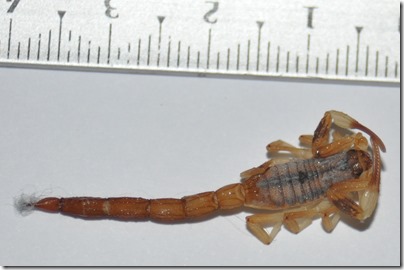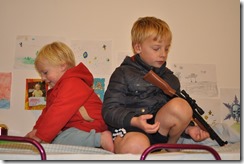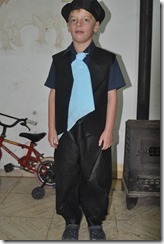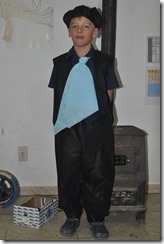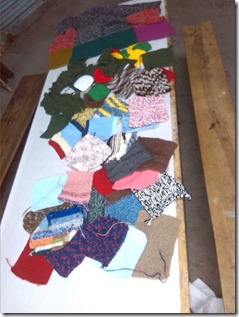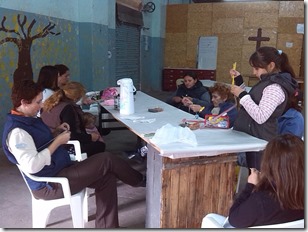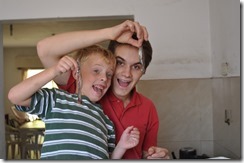Most people probably think of the marching season as a phenomenon exclusive to Northern Ireland. The marching in Argentina may be less controversial and better humoured than the flag waving in Norn Irn, but the level of commitment is at least as great. The “fechas patrias” (national dates) start around now with a gentle lead in for the Dia de Escarapela (Rosette Day) on the 18th of May, followed by the biggie, the anniversary of the Revolucion de Mayo (May Revolution) on the 25th of May, followed by the homage to General Belgrano for the Dia de la Bandera on the 20th of June, and finishing with Independence Day on the 9th of July. All of which are accompanied by parades, flag waving, ceremonies, speech making, and a celebration of Argentinean customs and traditions, and in particular, locro.
Locro is a winter brew, so we are fortunate that the fechas patrias fall at this time of the year (and having lived through several Argentinean summers I too would have waited till the temperature dropped before donning my battle gear against the Spanish). Locro is traditional fare across the Andes and the Southern Cone. It is essentially a thick broth whose ingredients vary according to the local produce of each region. I loved this quote from this article “As with many popular dishes with traditions that spill over international borders and date back centuries, endless varieties exist. Every region, indeed every home seems to hail their own version as the unrivalled victor of some imaginary global locro cooking competition, with winning family recipes often accredited to a grandma who received instruction that had been passed down for generations.”
In Argentina its chief ingredients of a good locro are white maize, beans and a pumpkin-like vegetable which isn’t squash but you could probably use squash at a push, boiled together for hours and hours, with a sundry assortment of bits of pig and cow innards. All the recipes that I could find on-line were rather too sanitized, but this one looks like it would result in something more or less recognisable albeit leaving out most of the squidgy bits and using ingredients that you can easily source in Europe. It would be fair to say that locro doesn’t look too appetising in the preparation stages, and even more so since it is normally cooked in large quantities in a battered but more-or-less-cleanish metal dustbin over a wood fire. It is also hard work in the initial stages when the animal innards need to be turned inside out and chopped and everything else needs to be chopped into small chips. But because it requires a team in order to be fun, it is also a great fund-raising activity. And we love it. At this time of year we tend to sniff out a locro for lunch on a Sunday, so last week we had one from a church across the city, and this week we have tickets for Joni’s school, and next week we have tickets from another school, and in a couple of Sundays’ time our Scouts will be flogging their annual cauldron’s worth, having first spent most of the Saturday dissecting pumpkin and pigs trotters.
